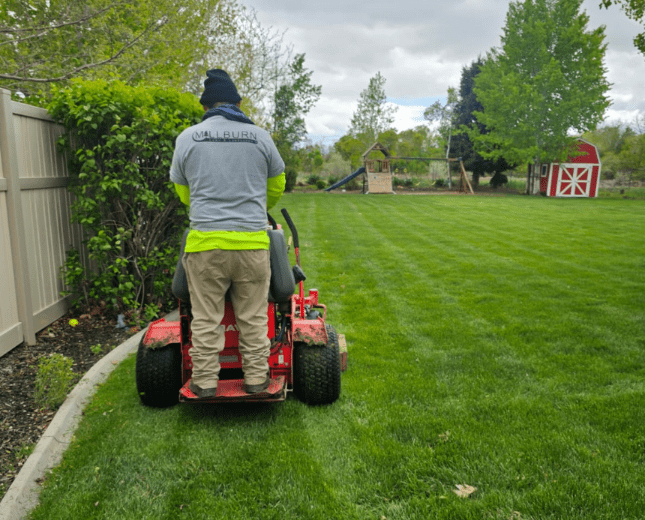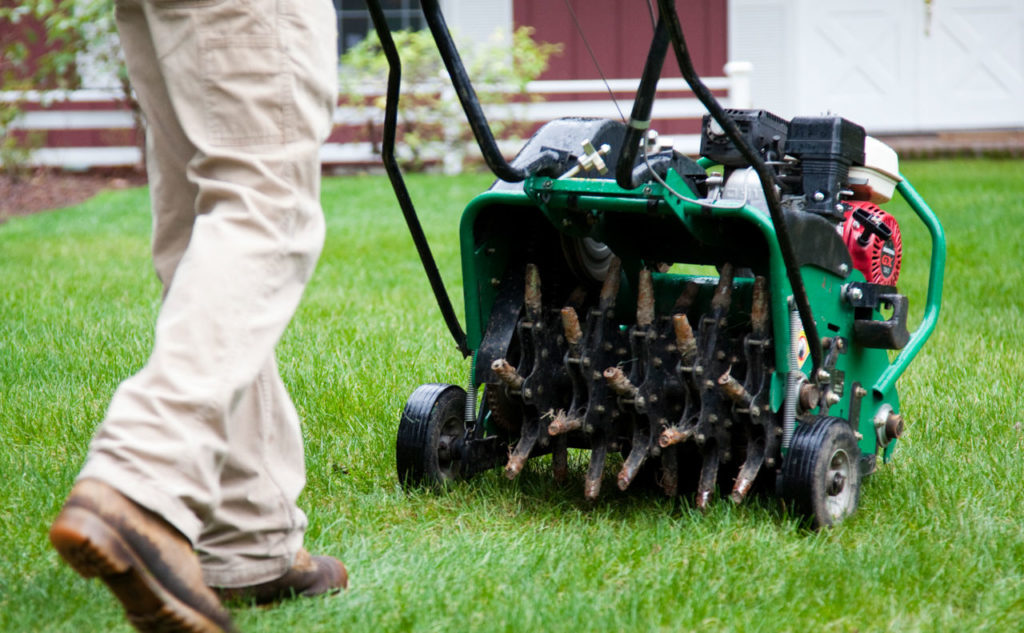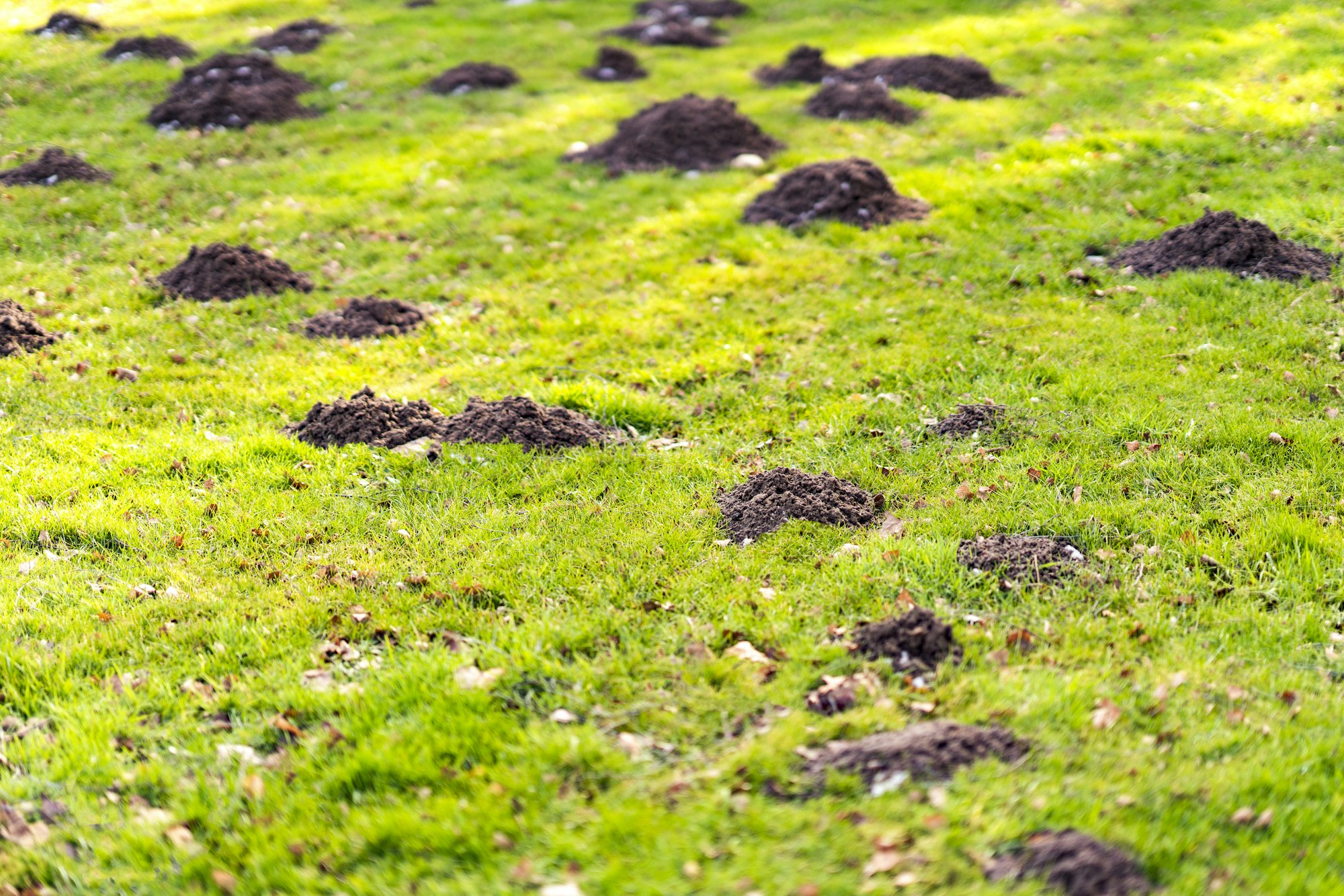Maintaining a lush, green lawn requires more than just regular mowing and watering. Many homeowners unknowingly make mistakes that can hinder their lawn’s health and appearance. In this detailed guide, we’ll explore the most common lawn care mistakes and provide practical tips on how to avoid them, ensuring your lawn stays vibrant and healthy throughout the year.

Avoid these common lawn care mistakes and keep your lawn looking its best all year long. Contact Millburn Lawn & Landscape for expert lawn care services tailored to your needs. Whether you need help with watering, mowing, fertilizing, or aeration, our team is here to ensure your lawn thrives. Get in touch with us today!
Overwatering or Underwatering

Signs of Overwatering
One of the most frequent lawn care mistakes is improper watering. Overwatering can lead to shallow root systems, making your lawn more susceptible to disease and drought. Signs of overwatering include yellowing grass, fungal growth, and a soggy lawn.
Signs of Underwatering
On the other hand, underwatering can cause your lawn to become dry, brittle, and prone to brown patches. Symptoms of underwatering include wilted grass that doesn’t spring back when stepped on and visible soil cracks.
How to Avoid Watering Mistakes
To maintain a healthy lawn, water deeply and less frequently, aiming for about 1 to 1.5 inches of water per week. Early morning is the best time to water, as it allows the lawn to absorb moisture before the heat of the day.
Mowing Too Short

The Problem with Scalping
Scalping, or mowing your lawn too short, is another common mistake. Cutting the grass too short stresses the lawn, exposes the soil to more sunlight, and encourages weed growth. It can also weaken the grass, making it more vulnerable to pests and disease.
How to Avoid Scalping
Set your mower blade to a height of 2.5 to 3 inches for most grass types. This height promotes deep root growth and helps the grass retain moisture. Additionally, never cut more than one-third of the grass height at a time to reduce stress on the lawn.
Ignoring Soil Health

The Importance of Soil Testing
Many homeowners overlook the importance of soil health in lawn care. Poor soil quality can prevent your grass from accessing the nutrients it needs, leading to poor growth and a patchy lawn. Ignoring soil pH levels and nutrient deficiencies can significantly impact your lawn’s health.
How to Improve Soil Health
Start by conducting a soil test to determine the pH and nutrient levels. Based on the results, amend your soil with the necessary fertilizers and soil conditioners. Regularly aerating your lawn also helps improve soil structure, allowing air, water, and nutrients to reach the grass roots more effectively.
Fertilizing Incorrectly

The Risks of Over-Fertilizing
Over-fertilizing your lawn can lead to nutrient imbalances, burning the grass, and promoting excessive growth that requires more frequent mowing. It can also contribute to environmental issues, such as water pollution from runoff.
The Dangers of Under-Fertilizing
Conversely, under-fertilizing can result in nutrient deficiencies, leading to weak, thin grass that is more susceptible to weeds and disease. A lack of essential nutrients can prevent your lawn from thriving.
How to Fertilize Properly
Follow a balanced fertilization schedule based on your grass type and the specific needs of your lawn. Use slow-release fertilizers to provide consistent nutrition over time, and always follow the recommended application rates to avoid over-fertilizing.
Ignoring Weeds

Why Weeds Are a Problem
Allowing weeds to take over your lawn is a common mistake that can be difficult to reverse. Weeds compete with grass for nutrients, water, and sunlight, weakening the lawn and making it less attractive.
How to Manage Weeds Effectively
Implement a proactive weed control strategy that includes regular mowing, proper fertilization, and the use of pre-emergent herbicides in early spring. Hand-pull or spot-treat weeds as soon as they appear to prevent them from spreading.
Skipping Aeration

The Importance of Aeration
Over time, soil can become compacted, restricting the flow of air, water, and nutrients to the grass roots. Skipping aeration can lead to poor grass growth, thatch buildup, and increased susceptibility to drought.
How to Aerate Your Lawn
Aerate your lawn at least once a year, preferably in the spring or fall. Use a core aerator to remove small plugs of soil, which helps relieve compaction and promotes healthier root growth. Follow up with overseeding to fill in any bare patches.
This blog post provides a comprehensive guide to avoiding the most common lawn care mistakes, helping homeowners achieve and maintain a lush, healthy lawn year-round. By following these tips, you can prevent damage and ensure your lawn remains the envy of the neighborhood.




